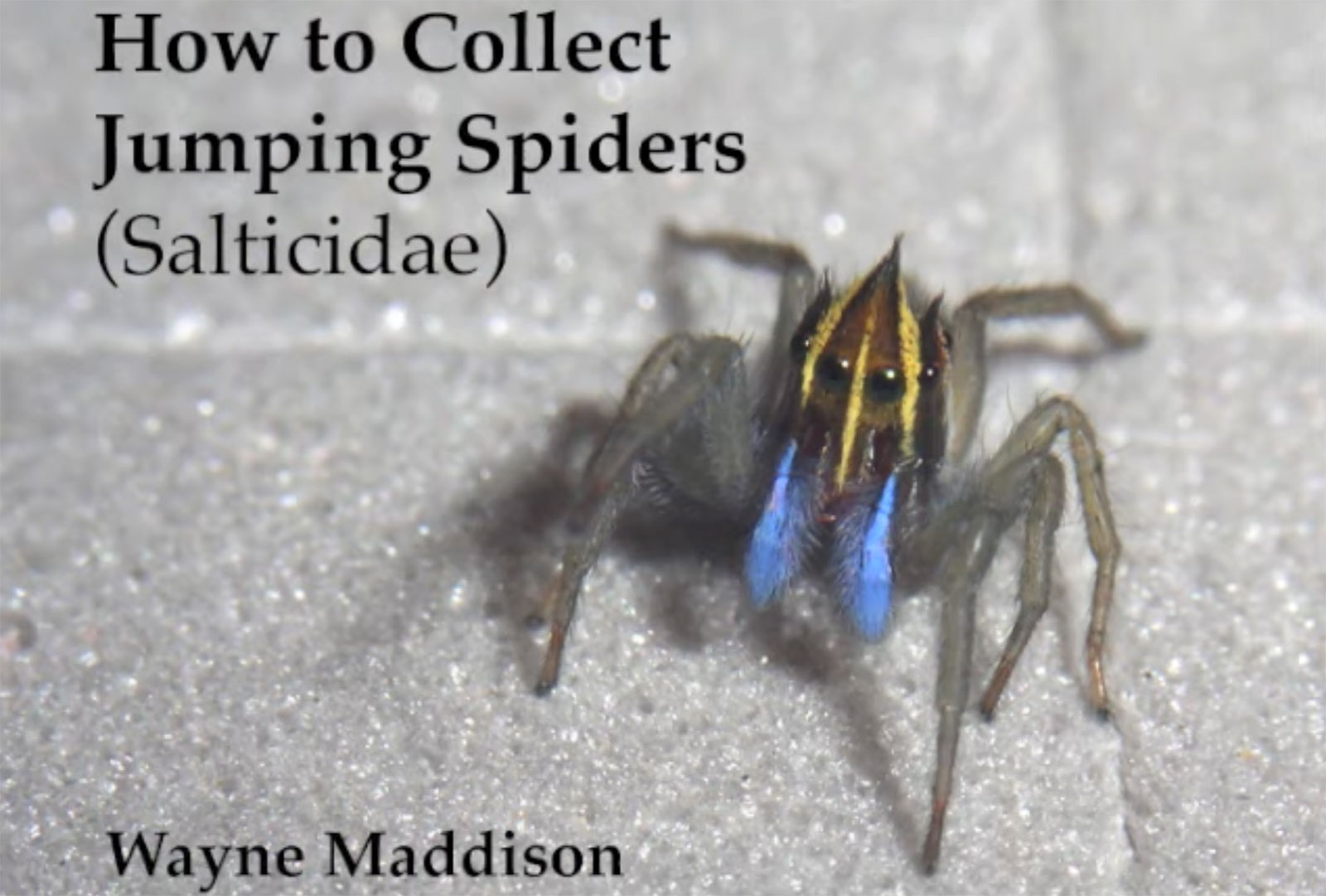Field Equipment & Techniques for Spider Collection
The collection of specimens is necessary for the study of spiders because most spiders cannot be accurately identified without microscopic examination of the body parts, especially their genitalia (sex organs). Without specimens that will allow scientists to verify the identities of the spiders, photographic records are of limited scientific value. However, this does not mean that we are advocating indiscriminate collection. For example, it is pointless to collect juveniles, as their genitalia are not fully developed. It is also important to bear in mind that collection in most protected areas such as nature or forestry reserves and national parks is strictly prohibited without a permit from the relevant authorities.

Field Collection Equipment & Techniques
Collecting Equipment
Spider collection requires very little specialised equipment. The most critical are clear, plastic containers, bottles or tubes with ordinary or snap caps. These are lightweight and convenient to carry around. There is no need to make ventilation holes on the bottle caps as spiders can survive for a few days in a closed container. However, many spiders cannot withstand heat and will die quickly if the containers are placed in heat traps such as a car parked under the sun.
Each spider should be housed in its own container, as the larger or hungrier spider will readily feed on another spider within close confines. Each container should be painted with a number or labelled with an adhesive sticker so that the specimen in the container may be matched subsequently against photographs and records of the date, time, locality, habitat and notes on observed habits taken in the field. Alternatively, the container may be number-coded by simply inserting into it a piece of paper with a number written in pencil. The number should not be written with a ballpoint pen as the ink will smudge when the paper gets wet.

Field Collection Equipment & Techniques
Collecting Methods
Hand collection is the simplest way to catch a spider: place a collection tube or container beside it and then gently tap the spider into the tube with the lid. For web-living spiders, it is important to place the tube below them, as they tend to drop to the ground when disturbed. For ground-living spiders, it pays to look under rocks or fallen branches. Hand collection is the simplest way to catch a spider: place a collection tube or container beside it and then gently tap the spider into the tube with the lid. For web-living spiders, it is important to place the tube below them, as they tend to drop to the ground when disturbed. For ground-living spiders, it pays to look under rocks or fallen branches.
It is possible to collect spiders living among foliage and shrubs with a light-colour inverted umbrella. The technique is to hold the umbrella with one hand and shake some branches with the other so that spiders will be dislodged and fall into the umbrella below. Alternatively, beating the branches with a wooden stick can also dislodge the spiders. Retractable and foldable umbrellas are recommended, as they are easy to carry.
We wear gloves when we hold and shake the branches to protect ourselves from thorns and harmful plant sap. In the shade of the forest, a headlamp can make it easier for one to spot the smaller spiders fallen into the inverted umbrellas, even in the daytime.


On a field trip, it will be very clumsy if you keep the containers in the trouser pockets or in a hand-carried bag. We recommend a lightweight photographer vest, or a deep waist pouch or sling bag just for the containers.
Spiders living in grassy areas or ground-level herbaceous plants may be collected by sweeping or “trawling” with a sweep net, which is essentially a modified butterfly net with a tougher white cloth bag and a shorter handle.
On longer field trips, spiders can be kept alive for up to a week so long as there is moisture in the containers. This can be provided by a small piece of wet tissue paper. Alternatively, all the containers may be kept within a sealable polythene storage bag with a larger piece of wet tissue paper to keep the air moist.
Leaf Litter Sifting
The best way to collect spiders inhabiting the forest floor is to scoop a heap of forest litter onto a white or light-colour plastic sheet spread on the ground, and then remove the leaves piece by piece to search for spiders. Small spiders in the litter can be picked up by touching them with a small paintbrush wetted in alcohol.


DIY Aspirator
Small spiders may be collected by sucking with a homemade aspirator, made of two plastic tubes (like those used for aeration of aquarium tanks) telescoped into each other. The tubes are separated by gauze and held in place by an adjustable pipe fastener. The captured spider can then be blown into a collection bottle.
Collecting at Night
Night collection can be very productive, as many spiders are active only at night. With a torch, many spiders can be easily observed in their webs at night against a dark background. A headlamp will be more useful, not only because it keeps your hands free, and allows you to pick up the eye shine of many nocturnal spiders easily. The trick is to ensure that the beam is parallel with your eye axis or line of sight. Once the lines are aligned, the light reflected from the spiders’ eyes will be immediately discernible as a brilliant glow.

This article is adapted from the Collection Techniques and Equipment chapter in Spiders of Brunei Darussalam by Joseph K. H. Koh and Leong Tzi Ming, 2013.




